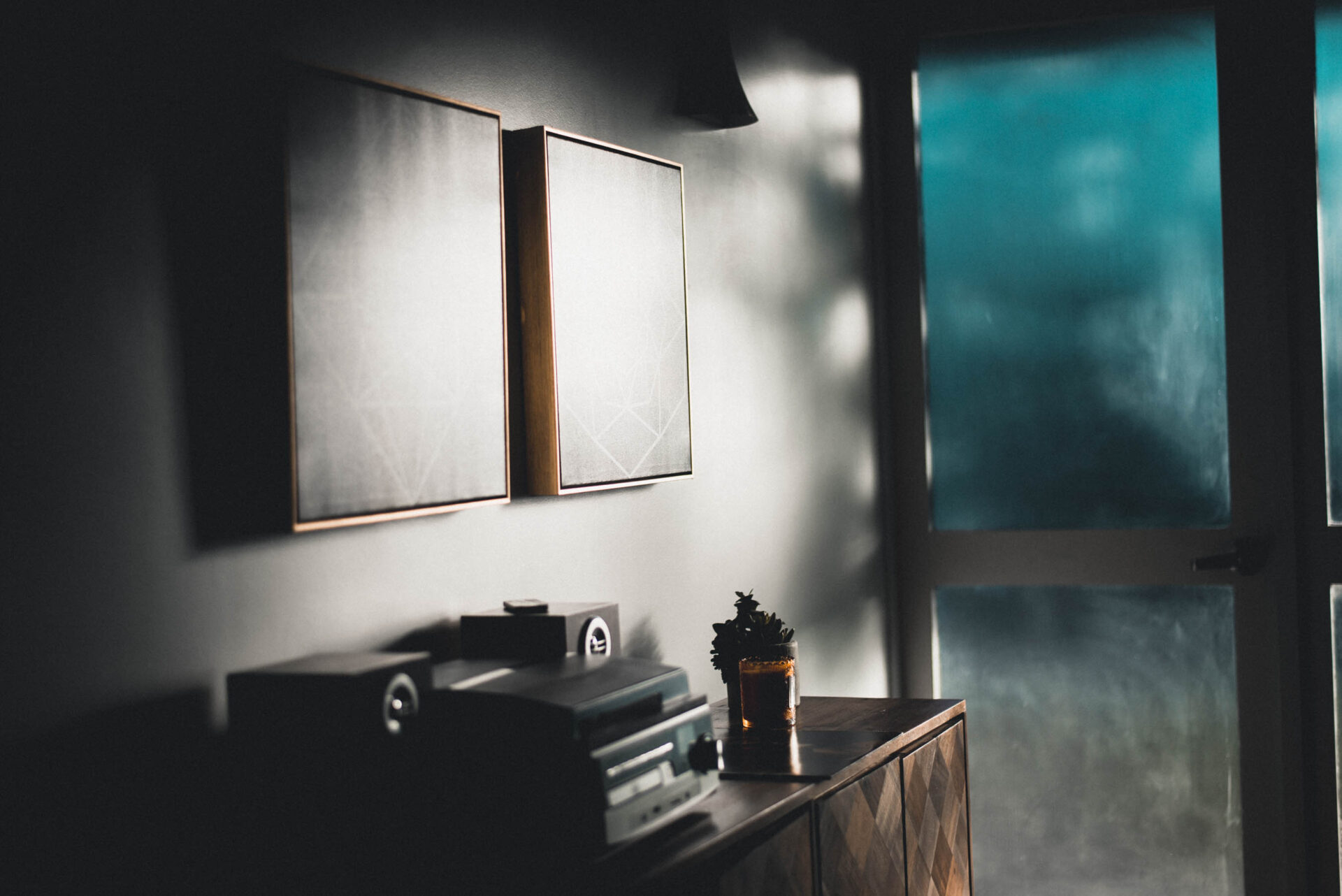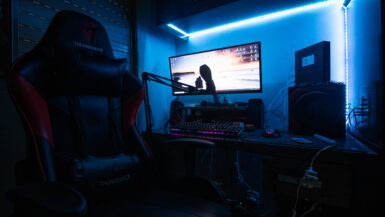In today’s fast-paced, technology-driven world, creating a peaceful sleep sanctuary has become increasingly essential for maintaining our well-being. As we strive to achieve the perfect balance between comfort and convenience, voice-enabled smart home devices have emerged as a pivotal component in designing our ideal sleep environment. In this article, we will delve into the transformative role of voice-enabled devices in creating a smart home sleep sanctuary, focusing on their potential to enhance sleep quality, automate bedroom settings, and provide personalized, data-driven insights to optimize our restorative slumbers. Join us as we explore the latest innovations and trends in this rapidly evolving domain, and discover how these cutting-edge devices can redefine your sleep experience.
Top Voice-Controlled Smart Devices for Sleep Optimization
As we continue to explore the immense potential of voice-enabled devices in crafting a restful sleep environment, it is essential to highlight some of the top contenders in this space. These innovative devices not only offer seamless control over various aspects of our sleep experience but also promise to redefine our relationship with technology in the bedroom. In this subsection, we will explore a selection of voice-controlled smart devices that have made significant strides in sleep optimization, showcasing their unique capabilities and benefits.
Amazon Echo with Alexa: The Bedside Assistant
The Amazon Echo, powered by the intelligent voice assistant Alexa, has become a popular choice for streamlining bedtime routines and sleep optimization. With its ever-growing list of compatible smart home devices, Alexa enables users to control lighting, temperature, and sound settings through simple voice commands. Additionally, it can provide sleep-inducing music, guided meditations, and ambient noises to help you drift off effortlessly.
Google Nest Hub: A Personal Sleep Coach
The Google Nest Hub goes beyond the capabilities of a traditional voice assistant, offering a visual display that intelligently curates your sleep environment. Integrated with Google Assistant, it allows users to access personalized sleep insights and recommendations based on tracked sleep data. From adjusting bedroom lighting to suggesting suitable sleep schedules, the Google Nest Hub offers a comprehensive approach to optimizing your sleep experience.
Apple HomePod Mini: A Compact Sleep Enhancer
The Apple HomePod Mini, featuring Siri voice assistant, offers a compact yet powerful solution for sleep optimization. With its ability to connect and control various HomeKit-enabled devices, users can easily manage bedroom settings such as lighting, sound, and temperature. Moreover, its rich audio quality and access to Apple Music make it an excellent choice for providing soothing tunes and bedtime stories that facilitate a restful slumber.
Sonos One: The Smart Speaker for Deep Sleep
The Sonos One smart speaker stands out with its superior sound quality and compatibility with multiple voice assistants, including Amazon Alexa and Google Assistant. This versatile device can help create a customized sleep environment by playing calming music, white noise, or nature sounds. Additionally, its integration with smart home systems enables users to automate bedtime routines and control various bedroom settings through voice commands.
These top voice-controlled smart devices have proven their potential to revolutionize the way we approach sleep optimization. By incorporating these innovative solutions into your sleep sanctuary, you can expect to enjoy a more seamless, personalized, and efficient sleep experience.
Integrating Voice Assistants for a Seamless Sleep Environment
Embracing the power of voice assistants can significantly improve your sleep experience by offering unparalleled convenience and personalization. In this subsection, we will delve into the various ways in which voice assistants can be integrated into your bedroom, transforming it into a smart sleep sanctuary. We will also discuss the potential concerns and solutions surrounding privacy and security to ensure a seamless and worry-free experience.
Centralizing Control for Effortless Bedroom Management
Voice assistants such as Amazon Alexa, Google Assistant, and Apple’s Siri are designed to centralize control over multiple smart home devices, making it easier to manage your bedroom environment. By connecting compatible gadgets, such as smart lights, thermostats, and sound systems, you can use simple voice commands to adjust settings to your preferences, creating a tailored sleep environment without lifting a finger.
Automating Bedtime Routines for Consistent Sleep Habits
Establishing a consistent bedtime routine is crucial for optimal sleep health. Voice assistants can help you maintain a regular schedule by automating tasks and reminders. For instance, you can create custom routines where your lights dim, the room temperature adjusts, and calming music begins to play, all triggered by a single voice command or set to activate at a specific time each night.
Providing Sleep-Inducing Content to Help You Unwind
Voice assistants can also play a therapeutic role in your sleep journey by offering a wide range of sleep-inducing audio content. From guided meditations and sleep stories to soothing nature sounds and white noise, users can request their preferred content to help them relax and drift off to sleep with ease.
Addressing Privacy and Security Concerns in the Bedroom
While the convenience of voice assistants is undeniable, it is essential to address potential privacy and security concerns. Many voice assistants come with customizable settings that allow users to disable the microphone or implement wake-word detection, ensuring that the device only listens when explicitly prompted. Moreover, investing in devices with robust security features and regularly updating software can further safeguard your sleep sanctuary from potential threats.
As we integrate voice assistants into our bedrooms, it becomes increasingly evident that these cutting-edge devices hold the key to a more seamless, personalized, and efficient sleep experience. By understanding the various ways in which voice assistants can be employed and addressing privacy concerns, you can unlock the full potential of these innovative solutions to elevate your sleep environment to new levels of comfort and convenience.
Enhancing Sleep Quality with Voice-Activated Lighting and Sound Solutions
In addition to centralizing control and automating bedtime routines, voice-enabled devices have the potential to elevate the quality of our sleep through advanced lighting and sound solutions. By harnessing the power of voice-activated technologies, users can create a personalized sleep environment that caters to their specific needs and preferences. In this subsection, we will explore how voice-enabled devices can help optimize lighting and sound conditions in the bedroom, paving the way for a more restful and rejuvenating slumber.
Creating the Perfect Sleep Atmosphere with Voice-Controlled Lighting
The impact of lighting on sleep quality cannot be understated, as it plays a crucial role in regulating our circadian rhythm. Voice-activated lighting solutions, such as smart bulbs and light strips, can be easily integrated with voice assistants like Amazon Alexa, Google Assistant, and Apple’s Siri. With simple voice commands, users can adjust brightness levels, color temperatures, and even create customized lighting scenes that promote relaxation and sleep.
For instance, setting a warm, dim light during bedtime can help signal the body that it’s time to rest, while gradually increasing the brightness in the morning can help mimic natural sunlight, making it easier to wake up refreshed.
Designing a Sound Oasis with Voice-Enabled Audio Solutions
Sound plays an equally important role in crafting the ideal sleep environment. Noise disturbances can hinder our ability to fall asleep and remain asleep throughout the night. Voice-enabled devices, such as smart speakers and soundbars, allow users to create a customized sound oasis by playing sleep-inducing content like white noise, nature sounds, or calming music.
Moreover, integrating voice assistants with smart home systems enables users to control sound levels and settings without disrupting their relaxation process. For example, users can request a specific soothing playlist, adjust the volume, or set a sleep timer using only their voice, eliminating the need for physical interaction with devices.
Combining Lighting and Sound for a Holistic Sleep Experience
By integrating both voice-activated lighting and sound solutions, users can create a truly immersive sleep environment that caters to their unique preferences. Voice assistants can be programmed to coordinate lighting and sound settings to create a cohesive bedtime routine, such as dimming the lights while playing gentle music or gradually increasing the brightness as a morning alarm sound begins to play.
Additionally, voice-enabled devices can also be used to access sleep data and insights, allowing users to make informed decisions about their lighting and sound preferences based on their individual sleep patterns and needs.
The integration of voice-activated lighting and sound solutions in the bedroom offers a powerful means of enhancing sleep quality and the overall sleep experience. By tailoring these elements to our individual preferences and needs, we can create a smart home sleep sanctuary that not only optimizes our rest but also elevates our well-being.
Sleep Tracking and Analysis: Voice-Enabled Devices for Personalized Sleep Improvement
As we strive to enhance our sleep experience and well-being, understanding our unique sleep patterns and behaviors is crucial. In this era of technological advancements, voice-enabled devices have emerged as powerful tools for sleep tracking and analysis, providing personalized insights and recommendations to help users optimize their slumber. In this subsection, we will delve into the various ways voice-enabled devices are revolutionizing sleep tracking and analysis, highlighting their potential to inform and transform our sleep improvement journey.
Understanding Your Sleep Patterns with Voice-Activated Sleep Monitors
At the core of personalized sleep improvement lies the ability to accurately monitor and understand our sleep patterns. Voice-enabled devices, such as the Google Nest Hub and Amazon Echo, can be integrated with sleep monitoring gadgets like smart mattresses and fitness trackers. These devices collect valuable data on sleep duration, quality, and disturbances, which can then be accessed and analyzed through voice commands. By asking simple questions like, “How did I sleep last night?” or “What is my sleep score?”, users can gain insights into their sleep patterns without the need for manual tracking or analysis.
Receiving Personalized Sleep Recommendations with Intelligent Voice Assistants
Armed with data from sleep monitoring devices, intelligent voice assistants like Amazon’s Alexa, Google Assistant, and Apple’s Siri can provide tailored sleep recommendations based on individual preferences and needs. By analyzing sleep patterns and identifying potential areas of improvement, voice assistants can suggest actionable steps such as adjusting bedroom conditions, modifying sleep schedules, or incorporating relaxation techniques. Users can even set reminders or create custom routines that integrate these recommendations, ensuring a consistent and effective approach to sleep improvement.
Monitoring Sleep Progress and Adjusting Strategies with Voice-Controlled Devices
As users embark on their sleep improvement journey, it is essential to track progress and make necessary adjustments to their sleep strategies. Voice-enabled devices can help users stay informed of their progress by providing regular updates and comparisons of their sleep statistics over time. By simply asking, “How has my sleep improved over the past month?” or “What changes have impacted my sleep quality?”, users can gain valuable insights into the effectiveness of their sleep improvement efforts and make informed decisions about their sleep strategies moving forward.
Exploring Sleep Education and Resources with Voice-Activated Devices
In addition to tracking and analyzing sleep data, voice-enabled devices also offer a wealth of sleep-related content and resources to help users expand their knowledge and understanding of sleep health. Users can request their voice assistants to provide information on sleep hygiene, tips for dealing with insomnia, or even the latest sleep research findings. By exploring these resources, users can develop a well-rounded understanding of sleep health, empowering them to make informed decisions and adopt evidence-based strategies to enhance their slumber.
The integration of voice-enabled devices in sleep tracking and analysis presents a promising avenue for personalized sleep improvement. By harnessing the power of these innovative gadgets to monitor sleep patterns, receive tailored recommendations, and access sleep-related resources, users can embark on a transformative journey towards a healthier, more restorative sleep experience.
Ensuring Bedroom Privacy and Security with Voice-Enabled Smart Home Devices
As voice-enabled devices continue to play an increasingly significant role in our quest for sleep optimization, it is crucial to address the potential privacy and security concerns that may arise within the bedroom. In this subsection, we will explore various strategies and best practices for safeguarding your privacy while enjoying the benefits of voice-enabled smart home devices. We will also discuss the importance of staying vigilant and informed about the latest security updates and features to ensure a safe and secure sleep environment.
Customizing Device Settings for Enhanced Privacy
One of the primary concerns surrounding voice-enabled devices is the potential for inadvertent eavesdropping or data collection. To mitigate these risks, most devices come with customizable settings that allow users to exercise greater control over their privacy. For instance, you can disable the microphone or enable wake-word detection, ensuring that the device only listens when explicitly prompted. Additionally, you can limit data storage and review or delete voice recordings to further protect your privacy.
Investing in Devices with Robust Security Features
When selecting voice-enabled devices for your smart home sleep sanctuary, it is essential to prioritize those with robust security features. Look for devices that offer features such as end-to-end encryption, secure boot, and tamper-resistant hardware. These features will help protect your personal data and minimize the risk of unauthorized access or hacking.
Regularly Updating Device Software and Firmware
To maintain a secure sleep environment, it is crucial to keep your voice-enabled devices up-to-date with the latest software and firmware updates. These updates often include security patches and improvements that protect your devices from potential vulnerabilities. Enable automatic updates whenever possible or make a habit of checking for available updates regularly to ensure your devices remain secure and protected.
Implementing Strong Passwords and Two-Factor Authentication
A strong password is your first line of defense against unauthorized access to your voice-enabled devices and associated accounts. Make sure to create unique, complex passwords for each device and avoid using easily guessed information. Additionally, consider enabling two-factor authentication (2FA) for an extra layer of security. 2FA requires both your password and a secondary verification method, such as a code sent to your phone, making it more difficult for unauthorized users to gain access.
Being Mindful of Third-Party Integrations
Voice-enabled devices often integrate with a variety of third-party services and applications, which can potentially introduce additional security risks. To maintain privacy and security, carefully review the privacy policies and security practices of any third-party services you connect to your devices. Only grant necessary permissions and consider disconnecting services that you no longer use or trust.
By taking proactive steps to safeguard your privacy and security while using voice-enabled smart home devices, you can enjoy the benefits of a smart home sleep sanctuary with peace of mind. By customizing device settings, investing in secure devices, regularly updating software, implementing strong passwords, and being mindful of third-party integrations, you can create a safe, secure, and restful sleep environment.





Leave a reply